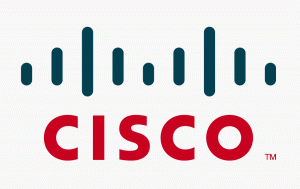 The Internet of Things (IoT) is transforming businesses profoundly. It is an industry revolution taking place right now, and it will revolutionize the old frameworks of all business thinking. Cisco is working on a number of fronts to turn IoT’s many, many possibilities into reality. The challenge for those interested in IoT is to combine their deep knowledge of their business with technical innovation. In order to promote large-scale IoT, Cisco introduced its strategy on Fog Computing with the second version of the IOx platform.
The Internet of Things (IoT) is transforming businesses profoundly. It is an industry revolution taking place right now, and it will revolutionize the old frameworks of all business thinking. Cisco is working on a number of fronts to turn IoT’s many, many possibilities into reality. The challenge for those interested in IoT is to combine their deep knowledge of their business with technical innovation. In order to promote large-scale IoT, Cisco introduced its strategy on Fog Computing with the second version of the IOx platform.
As a key part of the strategy Cisco Fog Computing, IOx allows third-party operating systems such as Linux and software applications industry run directly on Cisco network platforms, which is central to the solutions of the IoT where applications, storage and computing have to reside closer to sensors and devices.
The implementation of the IoT means unique requirements, such as the combination of sensors and distributed data, optimizing the analysis of data in motion as they enter the network and centralized control, which requires a new approach to strong infrastructure and a robust Data Center. Cisco’s strategy to invest in solutions of hybrid data centers, including Intercloud and fog computing is to create an optimized for IoT infrastructure.
Fog computing enables a new breed of applications and services, and allows a fruitful interplay between the cloud and the fog, particularly when it comes to data management and analytics. There’s a lot of data coming off the various sources, but a lot of limited connectivity to the cloud. They can use the fog to process the data and send only the most unusual or remarkable events back to the cloud.
Since the introduction of IOx, Cisco has driven an increase in the number of supporting platforms. The company has added Cisco IOx to their other 16 platforms, including routers Cisco 819 series, 88x, and 89 x. This extension allows applications to run in fog on a variety physical environments such as industrial manufacturing, transportation and energy.
With the IoT is making a significant part of the Internet of Everything, Cisco has decided to release a sketch of the key components of IoE Software and Services. The suite consists of software, services and solutions that turn data of IoT in business impact through automated processes and attractive and customizable interface. It also includes solutions for making real-time decisions through analytics, virtualization and integration of data covering the process from the core to the surface of the network, and leverage Cisco IOx and Fog Computing model to create business intelligence processes.
Cisco says that by 2020 there will be over 50 billion devices connected to the Internet, The connected devices will be not just computers, tablets or smartphones, but sunglasses, watches, cars or vending machines that will be able to guess your tastes. The IoT will generate revenues of $19 trillion dollars and will have five to ten times more impact on society than had Internet.